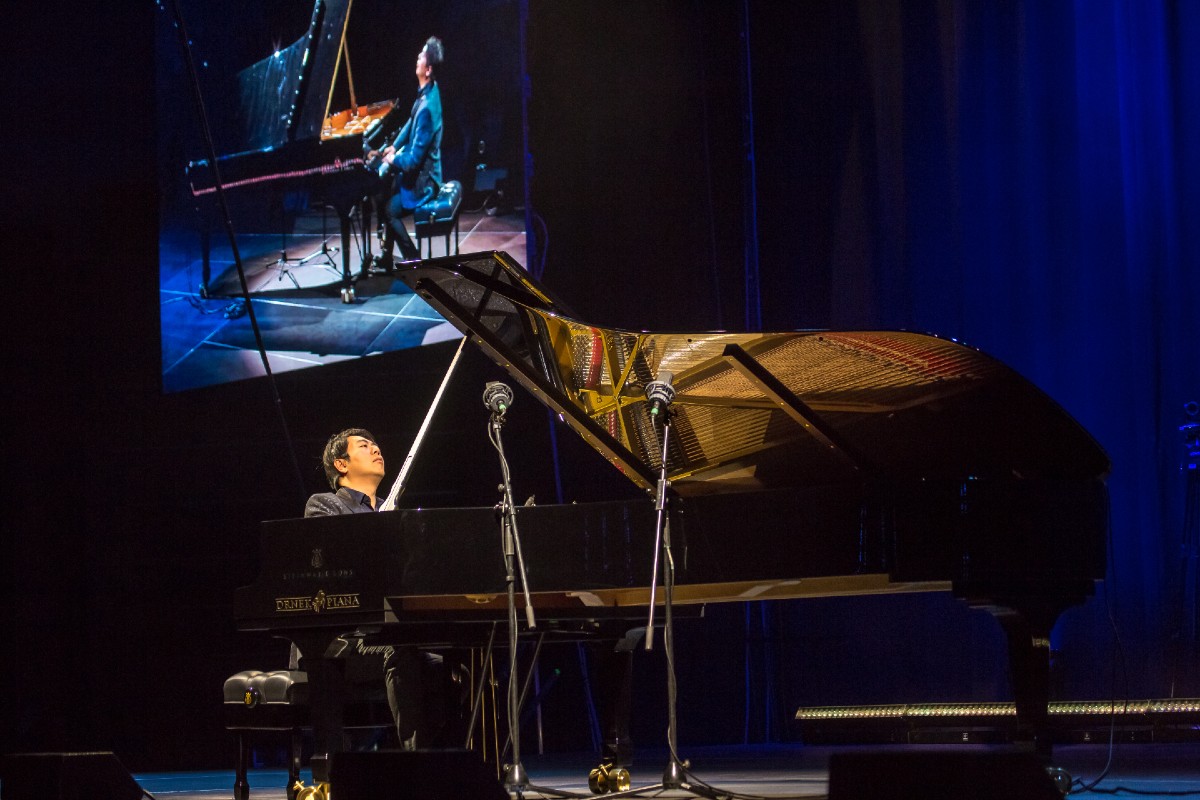It’s Saturday, April 30th 2022, and masses of chamber music connoisseurs and fans have gathered in front of the O2 Universum hall in Prague. Everyone is tense, sensing that something spectacular would happen that night. Johan Sebastian Bach’s Goldberg Variations, one of the pillars of piano works worldwide… Originally written on commission for Count Hermann Karl von Keyserling, who, being tormented by chronic insomnia, desired some cheerful music to brighten his endless, sleepless nights. The first performer of this set was the young Johann Gottlieb Goldberg, the court cembalist and protégé of count von Keyserling. Who would’ve thought, watching his 1741 premiere, that this composition would go on to be one of the greatest challenges for the most talented pianists of the modern era?
The audience is fidgeting restlessly and people are wondering: is a performance of baroque chamber music well suited for the space of this multi-purpose arena, which usually hosts congresses, entertainment shows and sports events? And would they be able to concentrate on a composition that’s almost an hour long? Luckily, the answers to both questions turn out more than positive. True, bare concrete walls, steel support beams and exposed cables aren’t the perfect background for Bach – Lang Lang himself has stated that this was his first time playing the Goldberg Variations in a stadium.
However, the organizers managed to utilize all the advantages of this setting. A solid sound system and cameras transmitting footage of the virtuoso’s hands and facial expressions to two massive screens made the listeners feel like they’re standing right next to the piano. If only there was a way to get rid off the hum of the ventilation system! During the quieter moments the audience sat frozen like statues – nobody wanted to risk moving and making the folding chairs creak.
Lang Lang gave an unusually focused performance. Every single tone had his full attention. Perfectly developed ornaments were paired with melodies seemingly sung by his hands. A massive dynamic range was used to differentiate the voices in polyphonic variations and to build contrast between separate variations. The tempos were chosen in such a way that the different variations led into each other perfectly and the work maintained a compact form.

It’s no revelation that Lang Lang can play technically demanding compositions at breakneck tempos without the tiniest mistake, while maintaining an air of grace and giving off the impressions that there’s nothing easier in the world. However, he fully proved his mastery during the slower parts, often played even slower than we’re used to, but thanks to his heartfelt performance he never once risked losing the audience’s attention.
Johann Gottlieb Goldberg died of tuberculosis at the young age of 29. Sadly, he never had the chance to perform this piece at a more mature age. The Goldberg Variations are a challenge for a mature and advanced pianist, which the 39-year-old Lang Lang undoubtedly is. Technical perfection is expected, but Lang offered us a unique vantage point, a feeling of understanding and connection with the composition, and above all a deeply personal performance. His temperamental gestures and swinging arms, seen as vital parts of his playing style, have been reduced to a more moderate form, only showing up where it was appropriate by the work’s character. In his face we could see a spiritual connection and humility.
I would characterize Lang Lang’s take on the Goldberg Variations as exactly what one might imagine when hearing the term “historically informed performance”. A clear articulation, intelligent phrasing, exact development of ornaments and work with polyphony. The pianist is not shy to admit that he has for years discussed this piece with Andreas Staier, an expert on baroque music. On the other hand, he also fully took advantage of the capabilities of a modern piano. His pedal work most stood out in variation no. 29, where he achieved a grandiose sound while maintaining the purity of individual chords.

Apart from the Goldberg Variations we’ve also heard Robert Schumann’s Arabesque in C major, which preceded the variations. After the program ended, the excited audience’s standing ovations have earned them two encores – Chopin’s Grande valse brillante Es dur, Op. 18 and a fantasia on the theme of the Chinese folk song Mo Li Hua(“Jasmine Flower”), the melody of which is reminiscent of some songs from Puccini’s opera Turandot.
A sharp contrast to the cold concrete walls and just as cold expressions of the security guards was provided by the little Chinese girls in princess-like dresses, who during the encores couldn’t stand to stay on their chairs and moved to listen from the aisle right up under the podium. They looked about three and six years old. Both girls stayed perfectly silent, but their presence somewhat relaxed the up until then serious atmosphere. The pianist noticed them, and he ended up rewarding their interest in the music by sharing his bouquet of pink lilies with them. There’s a reason why Lang Lang is widely considered a philanthropist and a classical music popularizer. We can only hope he will return to our beautiful Prague sooner than in another eight years!
Lang Lang: Goldberg Variations
April 30th 2022, 19:00
location: Praha, O2 Universum hall
Program:
Robert Schumann: Arabesque in C major, op. 18
Johann Sebastian Bach: Goldberg Variations
Performers:
Lang Lang – piano




